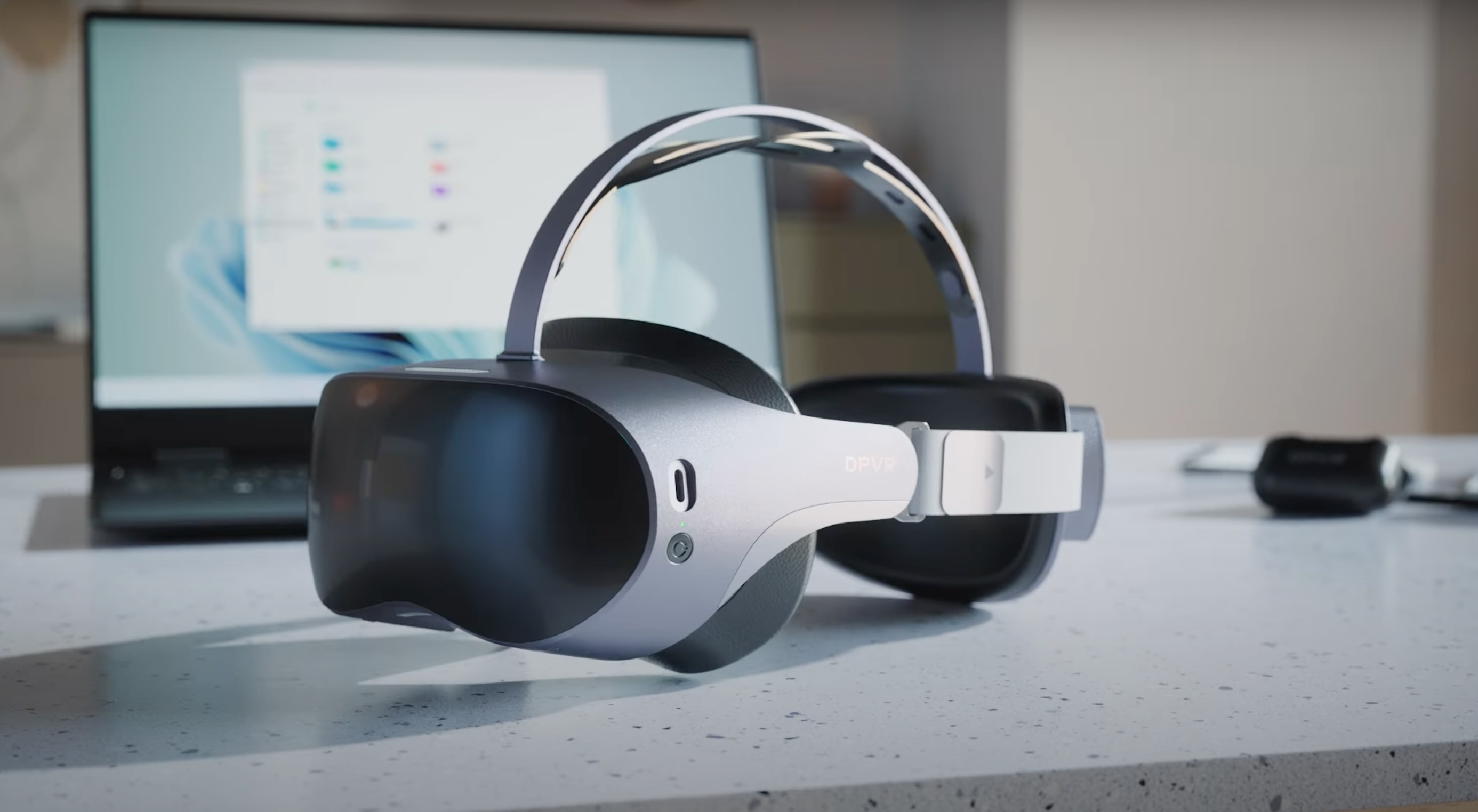On September 12th, the Shanghai-based XR company DPVR launched its most recent VR innovation, namely the DPVR P2 headset. Despite several of its specifications calling to mind those of its competitors, the considerable extent of their combination within this device alone seems likely to set the P2 apart upon its market arrival. Although, in China, DPVR stands proudly amongst the largest names in XR technology, within Europe, the name seldom features alongside those of Meta, HP, Apple, and HTC.
Could this headset, however, spark a turning point? To begin to gauge the P2’s potential to cleave a path within an increasingly crowded European market, let’s consider both its specifications and target audience in light of the precedent set by current market leaders.
WHAT DO WE KNOW OF THE P2 SO FAR?
Firstly, unlike many of the most popular headsets currently on the market, the P2’s target audience is that of “educators, EdTech providers, and forward-thinking enterprises”. Almost nowhere in its promotional material is the gaming industry mentioned, despite the apparent applicability of many of its features within this context. Regarding the often thorny issue of data management, it is stated by the company itself that:
“Once encrypted, files can only be accessed and decrypted by authorised DPVR devices, ensuring unparalleled protection for corporate data. Schools and institutions could harness this technology to create safe and private VR learning environments”.
Through these words, DPVR simultaneously clarifies the P2’s targeting of the business and education sectors while aligning the device with other recently-launched headsets from Europe’s most prominent XR names. In their marketing of the Vision Pro and Quest 3 headsets, Apple and Meta also placed considerable emphasis upon their attempted data protection improvements, yet – while the effectiveness of each of these companies’ seemingly promising measures remains to be seen upon their products’ release – it is important to bear firmly in mind the European hurdle of GDPR. To this issue, we will soon return.
WHAT ABOUT HARDWARE?
Regarding ergonomics, the headset boasts “front-back balanced weight distribution”, a strap able to be adjusted to fit both adults and children, and three level IPD (interpupillary distance) adjustment, permitting the user’s adaption of the lens spacing for comfort and clarity. Concerning this last feature of IPD adjustment, it should be noted that the P2 is far from unique. Its offering differs little from that of both the HP Reverb G2 and the HTC Vive Pro 2. Moreover, in its comfort-oriented weight-balanced design, it resembles the Meta Quest Pro.
WHAT TRULY SETS THE P2 APART?
Although far from distinct in every respect, the P2’s standout aspects become increasingly clear when considering its approach to customisability. In this respect, DPVR now goes far beyond its large-scale Western competitors, offering customers the opportunity to tailor their headsets, provided that their order totals over 100 units. Not only can a company request to change the logos and colour of their devices to accord with their personal brand, but the software itself also offers various customisation options.
Moreover, although following the broader VR manufacturing trend of improving noise-cancelling capacity, DVPR’s interest in doing so within the P2 somewhat distinguishes the device from Apple’s Vision Pro – a headset also without gaming as its target sector and one which, further, identifies itself as a potential tool within the contexts of study and work. In contrast to the Vision Pro where “speakers are positioned close to your ears” thus allowing the noises from the headset to “blend with real-world sounds”, DPVR have here taken the decision to reduce up to 80% of ambient noise, allowing the user to focus almost wholly upon the in-device activity.
Within many hypothetical use cases, educational and otherwise, this feature of the P2 may be argued both a benefit and a hinderance. Should a teacher desire a student to perform an VR task while sat still in a controlled, known environment, there is likely little issue with the P2’s noise cancelling aspect. Indeed, in all probability, the student’s concentration would increase in a way impossible for the Vision Pro. Should, however, this same student be required to perform a less stationary task in a minimally supervised and relatively unfamiliar setting, this same lack of environmental awareness could prove physically dangerous. For Apple’s Vision Pro, the latter scenario poses less of a risk.
WHAT ABOUT GDPR?
With all this in mind, there remains however, one key factor which will ultimately and wholly determine the P2’s chances of success in Europe. Although DPVR’s assertion of data’s encryption within the headset itself might instinctively evoke a sign of relief for many, these words ought still to be treated with an element of caution. Ultimately, DPVR’s admirable claims of being unable to collect and thus distribute personal data from the P2 will only become relevant within the EU, should the headset as a whole be approved as GDPR compliant. Such a question is raised in light of the DPVR’s position as a Shanghai-based company. Its answer is not yet clear.
If declared GDPR compliant, the P2 could potentially become a headset well worth the consideration of educators, businesspeople, and the many who occupy a space between. With several features developed to increase comfort, a pledge made towards encrypted data, customisability, and an immersive, noise cancelling feature, the product distinguishes itself well from many others on the market. Only with Apple’s Vision Pro, for example, does it have in common a device-specific data encrypting feature yet – priced at only $398US – the DPVR P2 seems potentially primed to become quite the practical, compelling alternative.
**Image credit to DPVR. Screenshot taken.




